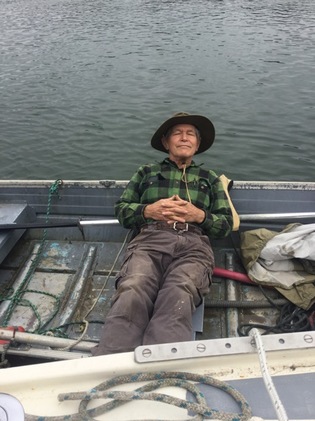It takes time to hear each sound that makes up the boat’s vocabulary. It’s probable many boaters never hear it, there isn’t enough time to relax and just listen. Think back to when someone first invited you over to their boat. It was busy and fun. Do you remember any sounds? Loud or soft? Was there the rubbing of a line, or the mast vibrating through the house? Could you hear the wind? We remember what we see first. Visual memory is fast. The hearing part comes when we aren’t so busy.
I know my Cal 29 so well that I have a map in my head of every line and sheet and all of the sounds they can make. I know the wind sounds, mast vibration and lapping of waves on the beam. If a pump cycles I know which pump it is. Better yet, I know the sounds my little boat should be making from the ones she shouldn’t.
It’s going to take awhile to learn this BaBa 35’s voice. She is much more complex, so much more boat. There are deeper sounds with longer periods dictated by her tonnage. The strong superstructure filters out many outside sounds but still manages to tease our ears with delicate harmonies. The hydronic system alone could be classified as a symphony, (which makes it difficult to pick out the quiet cycle of the refrigeration system).
When sailing I mostly feel the boat, the heel of the hull and power in the sails. I could be deaf and still be a competent sailor. “let my eyes see the flags to judge the wind, let my hands feel the tension in the sheets, may my body feel her speed through the sea as her rails dip into the dark waters.” That said I think a good captain knows the sounds of his boat as well as how she feels. The sails aren’t always up. At anchor, late at night, the only thing we have, the only sense still able to tell us if all is well, will be our hearing. It’s important to get to know your boat. Turn off the music, forget the video, do what you need to do, but do it while you listen. Learn the pulse and rhythm. It will keep you safe.



 RSS Feed
RSS Feed
